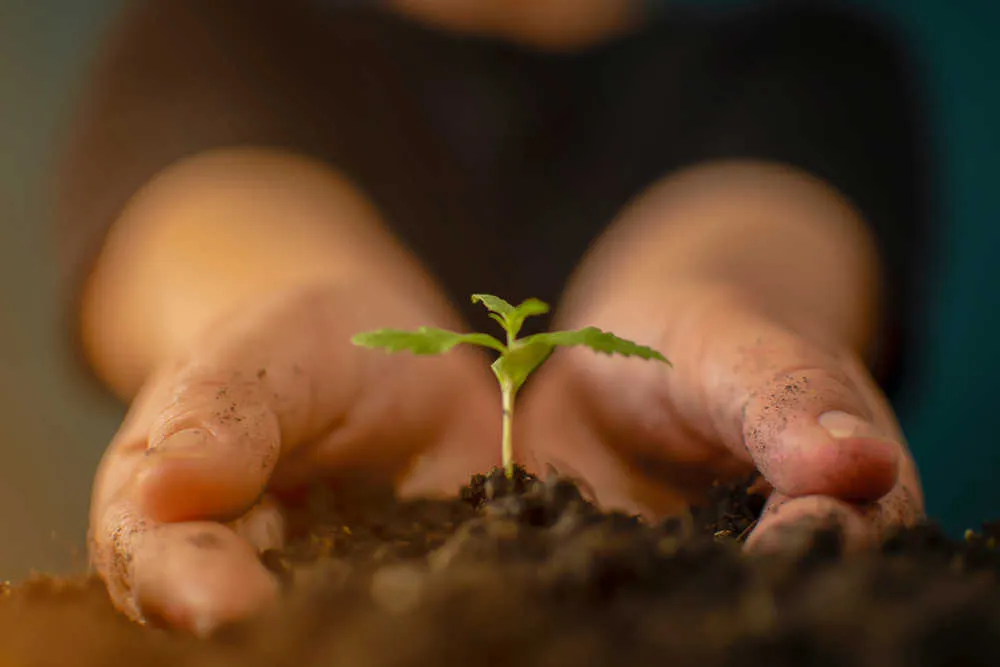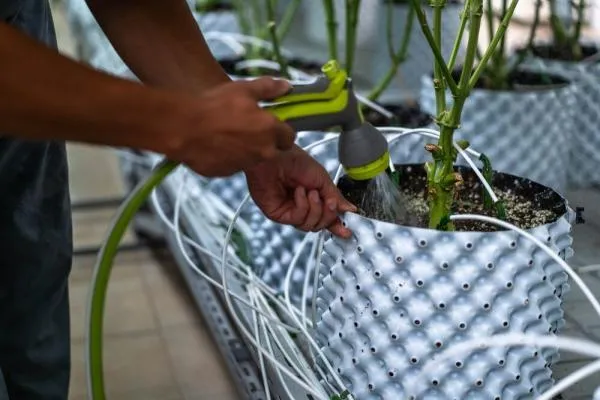Similar to other industries like food, household products and medicines, many are turning to the trend of going organic. Cannabis growers and consumers are no different. For the same reason many are turning to organic lifestyles, growing weed organically means your crop is chemical and pesticide free. Using compost made of mostly waste also allows for higher sustainability. Which helps to improve the environment around us. Most importantly, growing organically reproduces cannabis that is tastier, healthier and more potent for consumption. So how is compost tea and natural growing methods fueling the organic trend in the cannabis world? Let’s find out more as we explore compost tea recipes, its benefits and beyond.
Go Organic - How & Why
To grow organic means to grow without nutrients or supplements derived from a laboratory. Meaning all materials for growth come from natural sources, like food and yard waste. When these materials decay into ‘compost’ the end-product is full of useful microorganisms and natural nutrients. Beyond your weed tasting better and being more potent, organic practices will help your crops grow more healthily, too. By using organic compost and materials, you can rest assure your end-product being safe for consumption.
With cannabis, when feeding organically, the plants only extract the nutrients it needs from the soil and not over-take. This helps to avoid chemical burns that occur when plants intake too much non-organic supplements and react adversely. To begin growing organically, you have two options. You can do so yourself with DIY methods. Or pay the extra cost to purchase organically made soil and nutrients. Doing so on your own may save a few bucks but keep in mind it can take time, including preparation and upkeep. Next we’ll cover how to make your own organic compost, what it should include and important factors to consider.
DIY Organic Compost
To begin making compost you’ll need to follow a simple ratio for collecting materials. Successful organic composts for cannabis typically include 60% carbon materials and 40% nitrogen materials. Examples of carbon materials are dry leaves, cardboard, grass, wood chips, straw etc. As for nitrogen, materials like fruit and vegetable waste, coffee grounds, teabags, eggshells, etc. will do.
A compost pile is the simplest method to start your composting collection. All you need is an area to begin your pile and the initial materials to add. Some composters add a base to their pile to keep the materials together and easily accessible for transport. You can use something as simple as a storage container but you’ll need to ensure the piece has ample air flow. So, drill holes in the bottom of whatever you use. Or, you can build a structure with wood posts and a tarp base for the same function.
Adding a lid or tarp to your compost bin also helps to retain heat and moisture. If you want to invest into your composting operation, compost bins that incorporate all of these factors are available for purchase, as well. Because you’ll need to mix the materials every so often make sure your composting pile is equipped to let you do so. Again if you want to invest, a composting tumbler will do the trick.
Once you have your base or container, begin with a layer of 60% carbon materials followed by your 40% nitrogen materials. You’ll add a third layer of organic soil or potting mix and let the mixture start decaying. You can add waste as you obtain it, as long as you continue to follow the ratio of 60% carbon to 40% nitrogen.
To compost with optimal results, warmer temperatures will be necessary. The chemical process it takes to break down the organic matter requires heat and will pause in cooler temperatures. If your compost begins to dry out, simply add water to rehydrate and mix well.
So, once your compost is made how can you apply it as a viable nutrient? Let’s cover compost tea and how it’s a beneficial and easy method to do so.
Tea Time - Compost Tea as a Nutrient
Compost tea is far from a drink you’d want to enjoy at tea time, but your plants will be happy to partake. When compost is saturated or ‘steeped’ in aerated water, the outcome is known as ‘compost tea’. The process extracts beneficial microorganisms and nutrients into the water creating a ‘tea’ type solution.
Once your tea is made you can use it as a nutrient to feed plants or as a foliar spray. The mixture is chock full of fungi and bacteria's that promote growth and protect plants from disease or harmful factors.
Even though you can’t use compost tea as your sole method of feeding it acts as a highly effective supplement to other nutrients and growth, overall. We’ll talk more about the benefits of compost tea, next.
Why Use Compost Tea?

Compost tea combines a number of natural elements to boost growth and benefits plant health in other ways, too. Here are the top 5 benefits of using compost tea for cannabis plants:
Growth enhancement - Compost tea helps to increase nutrient absorption into plants enhancing its overall ability to grow. It also helps promote healthy root growth.
Non-toxic - Compost tea uses only natural resources to aid growth and provide organic benefits to plants. Making the solution chemical and pesticide free, and naturally non-toxic.
Improves soil structure - Because compost tea aerates soil naturally and helps to improve water retention, your plants will have a healthier base to grow in when using as a soil soak.
Protects against diseases - Natural microorganisms and bacteria boosts a plant’s immune system and increases resiliency against common, harmful diseases.
Cut down on costs - Compost materials are found in any common yard or home, making them sustainable and cost-effective, too.
Make Your Own Compost Tea and How To Use It
To begin applying compost tea to your crops, you’ll need a simple compost tea recipe. With a few materials, supplies and a bucket for mixing, here is an easy guide to follow when making your own compost tea.
- Collect Your Supplies. The bucket you use should be chosen based upon the size of your grow. For home grows, a 5 gallon (18L) bucket should do. You’ll also need an aerator and air pump device to infuse oxygen into the mixture. Lastly, you’ll need a mesh bag to contain your tea materials.
- Figure out timing. Compost tea does have a shelf life and should be applied to your plants within 24-36 hours of making it. While it takes 24-36 hours to brew properly. If you’re using compost tea as a foliar spray ensure it’s ready to apply in the early morning or late evening. Sunlight should be low, or if you’re in an indoor operation you can dim the lights.
- Choose extra ingredients. In addition to brewing your compost, a number of ingredients can be added to boost the benefits of compost tea. The most common additions include worm castings, fish hydrolysate, molasses or kelp. Certain ingredients are added prior to brewing while others are added in the middle, or at the end. So double check the timing for whichever supplement you choose.
- Add and aerate your water. Fill your bucket with water leaving 25% empty to allow room for your tea ‘bag’ to brew. If your water is highly chlorinated let it aerate first to break down the chlorine.
- Prepare your tea bag and start brewing. Choose an area out of direct sunlight to place your bucket. The temperature of your tea should remain between 65-85°F (18-29°C) for optimal results. Fill your ‘tea bag’ with the compost and any supplemental nutrients. Submerge the bag into the bucket of water and let your compost tea brew.
Apply Your Compost Tea
Once your compost tea is brewed and ready to apply there are a few simple practices to keep in mind. Even though compost tea won’t harm or burn your plants when applying generously, some growers choose to dilute tea with water. If diluting follow a 1:20 ratio for applying to soil and 1:2 ratio as a foliar.
When applying to soil always make sure to gravity feed the compost tea solution or use a diaphragm type of pump. This avoids breaking up and degrading helpful microorganisms. Also, never use a drip line feeding system as the tea can clog the lines over time.
As for timing, most growers recommend applying compost tea without additional supplements, twice a month for balancing soil. If your compost tea is enhanced with supplements, apply the solution up to 3x a week.
Enhance Plants Naturally With Compost & Compost Tea
As industries and society merge towards more natural and organic practices, cannabis growers are following suit. The benefits that natural ingredients can provide to a human’s health, remains consistent with plant health too. To enhance your plants growth and health, consider composting or using our compost tea recipe as a sustainable and beneficial supplement.










